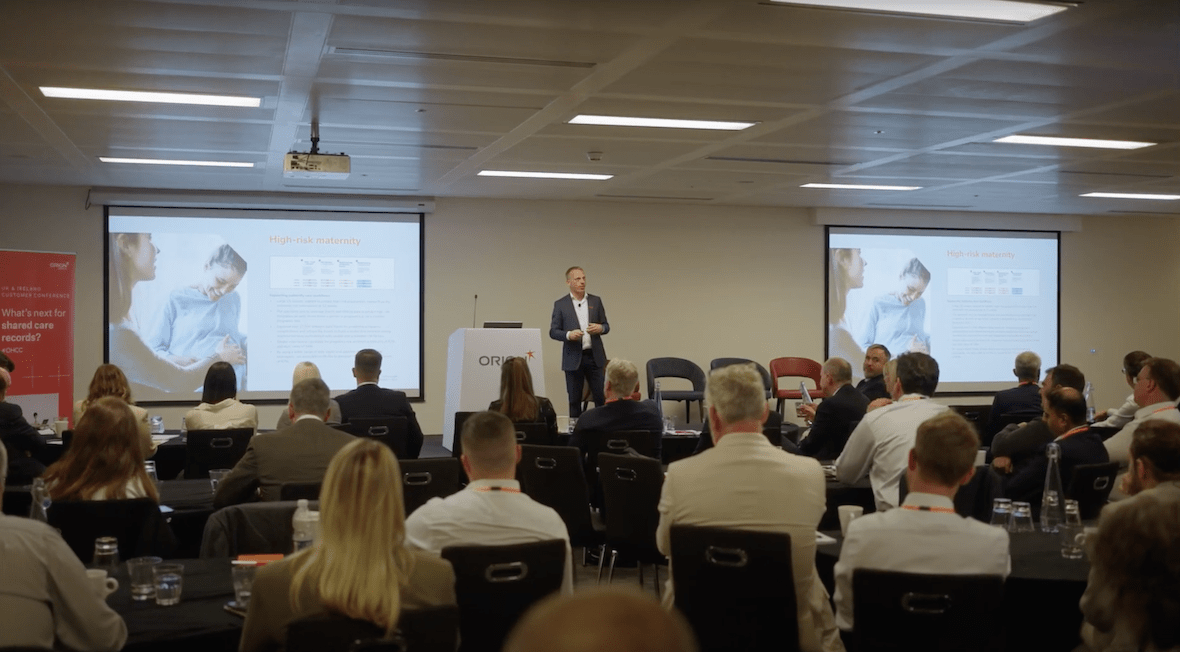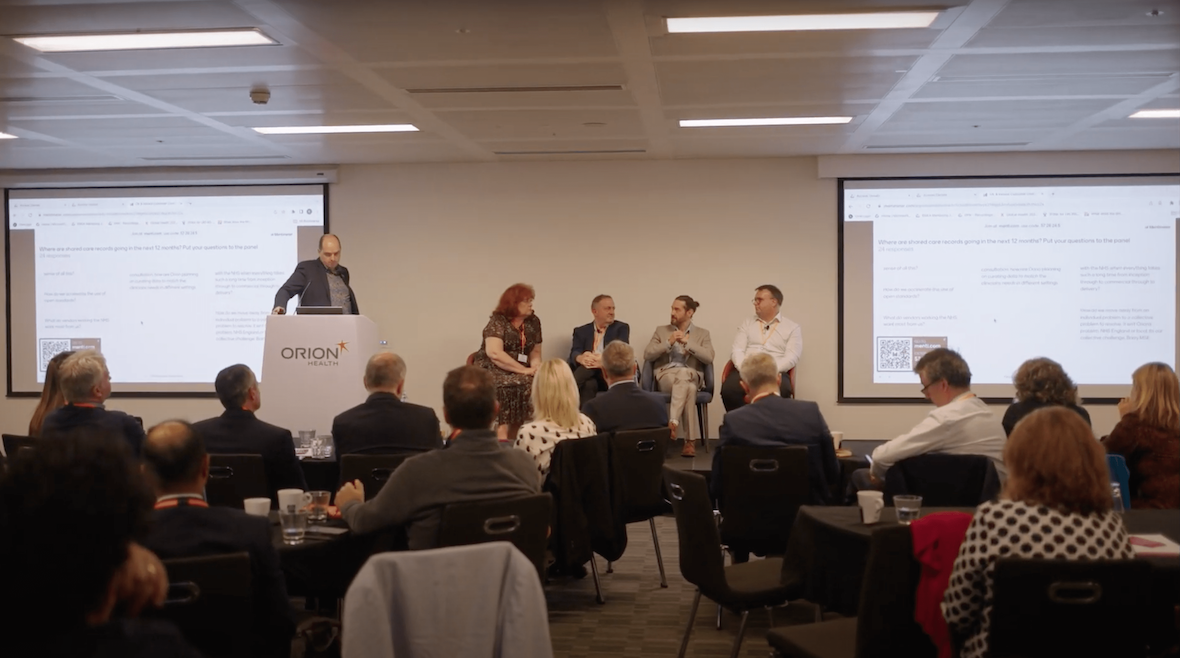Mark Hindle, Vice President EMEA, Orion Health, looks forward to an election year and argues
that if political parties are looking for a ‘big idea’ for the NHS, they could do worse than
recognise the potential of a flagship programme to join-up ShCRs and finally create a single,
longitudinal health and care record for every person in England.
It’s going to be a busy year in the shared care records space. NHS leaders, ShCRs and their suppliers
are going to have plenty of work in hand to drive adoption, improve maturity, share data across
boundaries, and start thinking about how to extend the use of ShCR information to system leaders and
patients.
But, as the country starts to think about the general election that must be held before the end of
January next year, we also need to keep an eye on the big picture. How do we make ShCRs financially
sustainable, and get them fully embedded in the health and care system? Here’s how I see 2024, in
nine tasks and one, big picture challenge:
One: address the adoption challenge
Every integrated care system has a shared care record in place, so the focus has switched to adoption. NHS England figures show that some long-standing ShCRs have thousands of views per month, while some of the newer ones have just a few hundred. So, there is an adoption support challenge, and we are keen to help our customers with it, by helping them to mine their data for new groups to approach or to learn from innovative communications ideas, like the videos the Care and Health Information Exchange produced for different professionals.
Two: complete the dataset
We know that some ShCRs need to complete the data picture because that changed over time. Most obviously, when the early ShCRs were set-up, there was much less emphasis on including social care data than there is today. We are seeing a new emphasis on vendor-to-vendor relationships when it comes to getting data to flow. However, there needs to be a fair way of paying for the data collection, storage and streaming required. At the moment, NHS data streaming is a bit like music streaming before Spotify came along.
It’s a mess – but sorting it out will transform the landscape for users.
Three: advance maturity
The NHS England ask for the next twelve months is for every clinician to be able to see the ShCR – to have a passive view of the data. That’s a pretty low bar, but it’s keen to go further. In January, every ShCR will need to submit a plan to get to what is known as ‘minimum viable solution 2’ or MSV2.
NHS England will then announce funding allocations for ShCRs to deliver this. We will do everything we
can to help our customers to get there, but the challenge is that this will be non-recurring money. It’s
not clear how ShCRs will be supported after 2025, or whether they will be expected to become self-
funding.
Four: support data sharing across ShCR boundaries
NHS England is also looking to share care summaries and other information across ShCR boundaries. Its mechanism for doing that is the National Record Locator Service, and we will be supporting that.
However, as a company, we are also progressing a discussion about the international patient summary.
That’s backed by the G7 and the Biden administration in the US as a minimum dataset for safe care;
and if it is, then it should be as applicable in the UK as it is internationally.
Five: think international patient summary
One of the benefits of adopting the IPS as a national data sharing standard is that it would finally deliver on Tony Blair’s vision of creating a single, longitudinal care record for everybody in England, and making their information available from Newcastle to Newquay.
This might sound abstract, but it would support the adoption challenge. Areas like Devon and Cornwall
really do see a lot of tourists, so being able to access information about them is a big draw for clinicians
working in ambulance and emergency services.
Six: rethink population health
The data in the ShCR should also be an incredibly rich resource for what used to be called population health management. Until recently, the idea was that you would use data to identify a problem, commission a response, and then review it to see whether it worked.
But healthcare economies need to work faster. The data in the ShCR can tell you, practically in real-
time, what health issues are coming up in the community and how health services are responding. It
could be the closest thing to air traffic control that we have got.
Seven: but forget about the FDP
NHS England has commissioned a Federated Data Platform that sounds as if it should do this. But it will only handle acute data and it will be up to trusts to use it. Orion Health has developed a Health Intelligence Platform that integrated care systems could use right now, building on the data in their ShCRs.
Eight: engage patients
NHS England is also keen to advance the patient engagement agenda. It is supporting a number of providers to integrate their shared care records with the NHS App. The Devon and Cornwall Care Record is leading on that work so users can log into our Virtuoso Patient Portal through the national app.
From there, it will be a small step to enable patients to submit more data themselves. That’s vital for the
expansion of virtual wards and remote monitoring, which need to be linked into the ShCR, to avoid a
proliferation of siloed platforms and apps.
Nine: inform choice
Another aspect of the patient engagement agenda is patient choice. Both ministers and the Labour Party health team see a big role for patient choice in addressing access challenges and driving down waiting lists. However, choice has to start with information about what is available, and this could be surfaced through a portal linked to the ShCR.
At the same time, if patients are going to be moving from GP practice or trust to another, professionals
are going to need information about them. The IPS can be accessed via a QR code the patient carries
with them, so this could be another interesting use case for adopting it as a national information sharing
standard.
See the bigger picture: This brings me to my point about seeing the bigger picture. We need to start
thinking about how we can make sure that ShCRs have a sustainable funding model beyond the
coming year, and that they are fully embedded in the health service.
Yes, NHS England has backed ShCRs and, yes, it is running projects on adoption, maturity, information
sharing across records. But it can still feel as if the focus of ministers, NHS leaders and commentators
is on getting electronic patient records into hospitals, when it is building a longitudinal health and care
record that should be the flagship IT project for the NHS.
In parts of the Middle East, where Orion Health runs major health information exchanges, it is
mandatory for organisations to connect. If you want to run a hospital, or even a cosmetic clinic, you
have to sign-up and contribute your data. That might be difficult to achieve in the UK, but with that
general election coming, the main political parties are going to be looking for big ideas.
Completing the ShCR dataset, driving hard on adoption, and sharing information across ShCR
boundaries could be the project they are looking for. Creating that single health and care record for
every person in the country would be transformational, not just for direct care, but for population health,
and service improvement, and patient empowerment.
Of course, organisations would still need EPRs to support their operations. And we will need to address
inequalities in access to digital tools and education. But if we are serious about systems to care for the
patient, we should be talking about the ShCR, and if we are serious about using data for research,
planning and empowerment, we should be talking about the ShCR.
Doing that would help a lot of the other conversations, about use, and funding, and standards fall into
place, because we would be focused on getting the basics right. We need to start with the data and
getting it into the hands of professionals and people and work from there.



